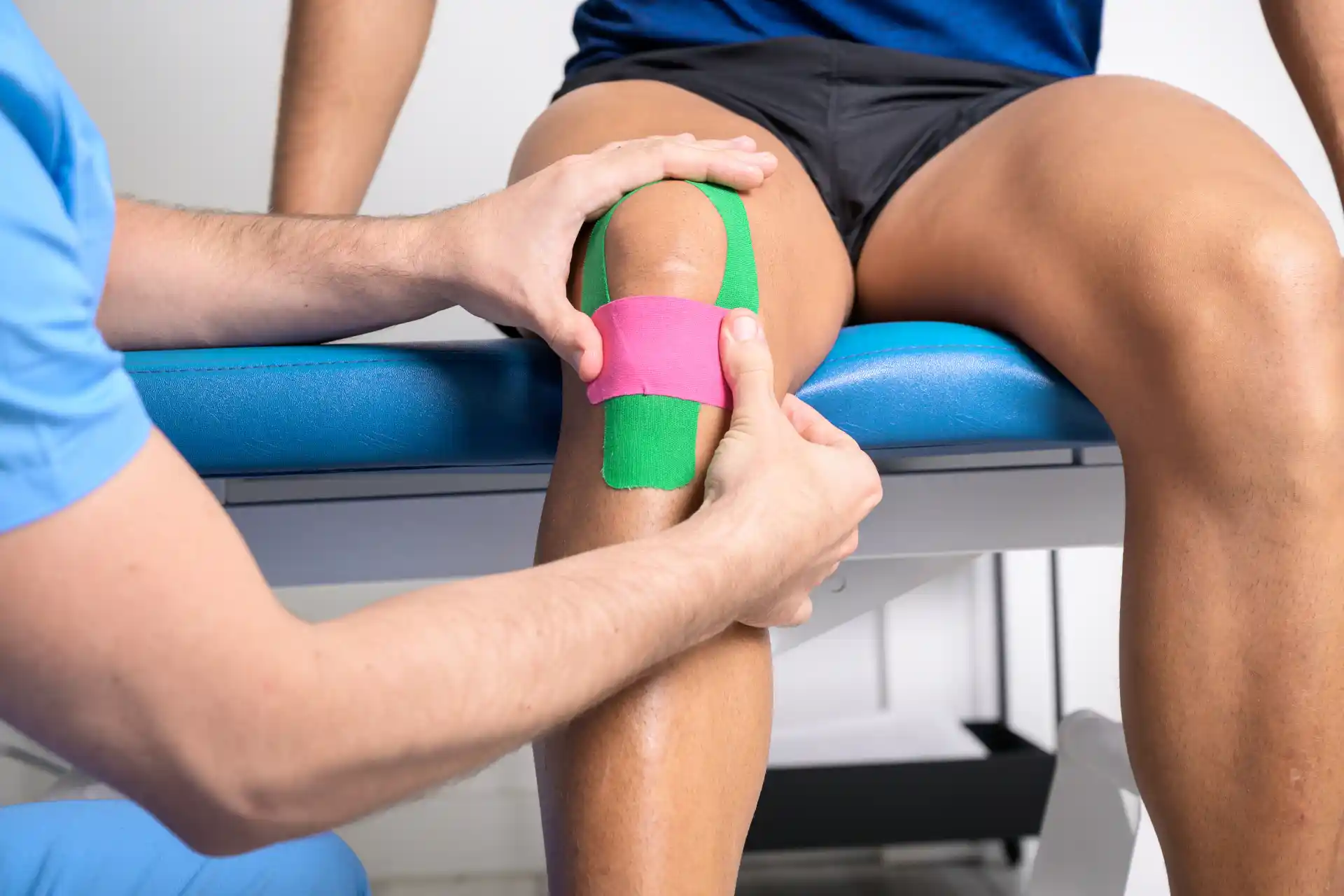Importance of Shoulder Mobility
Shoulder mobility plays a crucial role in overall function and athletic performance. Maintaining healthy and mobile shoulders can help you avoid injuries and improve your range of motion.
Impact of Rotator Cuff Injuries
Rotator cuff injuries can significantly affect shoulder mobility. The rotator cuff is a group of muscles and tendons that stabilize the shoulder joint.
Injuries to this area, such as tears, strains, or tendinitis, can lead to pain, limited movement, and weakness.
Common symptoms of a rotator cuff injury include shoulder pain, especially when lifting the arm, and reduced range of motion.
Read more on conditions that affect shoulder mobility such as frozen shoulder, restricted mobility and shoulder tendinopathy.
Benefits of Improving Shoulder Mobility
Enhancing shoulder mobility offers numerous benefits, especially for those recovering from a rotator cuff injury.
Here are some key advantages:
- Pain Reduction: Regular shoulder mobility exercises can help alleviate pain associated with conditions like rotator cuff tendinitis and shoulder impingement.
- Enhanced Range of Motion: Improved mobility allows for a greater range of motion, making it easier to perform daily tasks and engage in sports activities.
- Preventing Further Injuries: By maintaining flexible and well-conditioned shoulders, you can reduce the risk of future injuries such as shoulder bursitis or a torn labrum.
Incorporating shoulder mobility exercises into your regular routine is essential. Improving shoulder mobility is not only vital for athletes but also for anyone who wants to maintain a healthy and active lifestyle.
Remember to seek professional guidance if you suspect a rotator cuff injury or experience persistent shoulder pain when lifting arm.
Assessing Your Shoulder Mobility
Evaluating your shoulder mobility is crucial in identifying any limitations that may hinder performance or daily activities. It also guides you in choosing the appropriate shoulder mobility exercises for rehabilitation.
Signs of Restricted Shoulder Mobility
Restricted shoulder mobility can present itself in various ways. Recognizing these signs early can help you address the issue before it leads to more serious problems.
Here are some indicators:
- Pain or discomfort: Persistent pain in your shoulder joint while performing everyday tasks or specific activities.
- Limited range of motion: Difficulty in lifting your arm over your head, reaching behind your back, or extending your arm to the side.
- Weakness: Decreased strength in your shoulder, making it hard to carry out routine tasks.
- Stiffness: Feeling tightness or rigidity in the shoulder area, especially after periods of inactivity.
- Swelling or inflammation: Visible signs of inflammation around the shoulder joint.
If you experience any of these symptoms, it may be indicative of restricted mobility, potentially due to conditions like a rotator cuff injury or shoulder impingement.
Importance of Proper Diagnosis
Obtaining a proper diagnosis is indispensable to effectively address shoulder mobility issues. This ensures that the underlying cause of your restricted mobility is accurately identified and treated. A professional diagnosis can involve:
- Physical examination: A thorough assessment by a healthcare provider who will evaluate your shoulder's range of motion, strength, and pain points.
- Imaging tests: X-rays or MRIs may be recommended to get a detailed view of the shoulder joint and identify issues such as a rotator cuff tear or torn labrum.
- Special tests: Clinicians might perform specific tests like the Empty can test or Hawkins Kennedy test to pinpoint the problem.
Proper diagnosis is essential to develop a tailored treatment plan, which may include rotator cuff exercises or other targeted shoulder pain exercises.
Accurate evaluation and diagnosis provide the foundation for effective recovery and long-term shoulder health.
Effective Mobility Exercises
Improving your shoulder mobility is essential, especially if you're recovering from rotator cuff injuries. Incorporating specific exercises into your routine can help enhance your range of motion, reduce pain, and prevent further injuries.
Here are some effective shoulder mobility exercises to try:
Shoulder Rolls
Shoulder rolls are a simple yet effective exercise to improve mobility and relieve tension in your shoulders. This exercise helps loosen up the shoulder joints, promoting better circulation and flexibility.
How to perform shoulder rolls:
- Stand or sit with your back straight and shoulders relaxed.
- Slowly roll your shoulders forward in a circular motion.
- Complete 10 to 15 rolls.
- Reverse the direction and roll your shoulders backward.
Wall Angels
Wall angels are excellent for increasing shoulder mobility and improving posture. This exercise targets the muscles around the shoulder blades, helping to stabilize and strengthen the area.
How to perform wall angels:
- Stand with your back against a wall, feet about 6 inches away from the wall.
- Press your lower back, upper back, and head against the wall.
- Raise your arms to form a 90-degree angle (elbows bent out to the sides, forearms parallel to the floor).
- Slowly slide your arms up the wall, keeping contact with the wall, then lower them back down.
- Perform 10 to 12 repetitions.
Arm Circles
Arm circles are beneficial for warming up the shoulder muscles and increasing blood flow to the area. This exercise promotes greater flexibility in the shoulder joints and can help alleviate stiffness.
How to perform arm circles:
- Stand with your feet shoulder-width apart and arms extended out to the sides.
- Make small circles with your arms, gradually increasing the circle size.
- Complete 15 to 20 circles in one direction.
- Reverse the direction and complete 15 to 20 circles.
Incorporating these shoulder mobility exercises into your routine can significantly aid in alleviating issues related to the rotator cuff.
If experiencing persistent discomfort, consider seeking professional advice to ensure a safe recovery process.
For additional guidance, you may find our articles on rotator cuff pain and rotator cuff injury helpful.
Advanced Mobility Exercises
When recovering from a rotator cuff injury, advanced mobility exercises can play a crucial role in regaining your shoulder's full range of motion.
Here, we focus on three effective advanced exercises: external rotation stretch, shoulder extension stretch, and scapular retraction.
External Rotation Stretch
The external rotation stretch targets the small muscles around the rotator cuff, helping to improve flexibility and strength.
How to Perform
- Stand or sit with your back straight.
- Place a rolled towel between your arm and torso.
- Hold a light resistance band or a light dumbbell.
- With your elbow at a 90-degree angle and close to your torso, rotate your forearm away from your body.
This stretch is particularly beneficial for those dealing with rotator cuff tendinitis or a supraspinatus tear.
Shoulder Extension Stretch
This stretch enhances the mobility of the posterior shoulder muscles, aiding in the overall flexibility of your shoulder joint.
How to Perform
- Stand with feet shoulder-width apart.
- Hold a resistance band or a light weight behind your back.
- Keeping your arms straight, lift the weight or band upwards until you feel a stretch.
Incorporate this stretch into your routine to improve the posterior shoulder mobility, especially useful for those recovering from a rotator cuff tear.
Scapular Retraction
Scapular retraction focuses on the muscles around your shoulder blades, improving shoulder stability and posture, which is vital in the recovery and strengthening process.
How to Perform
- Stand or sit with your back straight.
- Squeeze your shoulder blades together without lifting your shoulders up.
- Hold the squeeze for a few seconds and then relax.
This exercise is beneficial for promoting better posture and shoulder health, especially if you're experiencing shoulder instability.
Incorporating these advanced mobility exercises into your routine can significantly aid in your recovery process.
Always consult with a healthcare professional for personalized recommendations and ensure you perform these exercises correctly to avoid further injury.
Explore our articles on exercises that may help related shoulder conditions such as frozen shoulder and pinched neck nerve.
Best Practices for Shoulder Recovery
Recovering from a shoulder injury, especially one involving the rotator cuff, requires a thoughtful and strategic approach.
Here are some best practices to ensure you get back to optimal shoulder health.
Gradual Progression
One of the most critical components of recovery is gradual progression.
Start with exercises that are low intensity and increase the difficulty level over time. This helps to avoid exacerbating the injury and allows your shoulder to build strength progressively.
Monitoring your body's response to these exercises can help you understand when it is appropriate to move to the next stage.
Consistency in Exercise Routine
Consistently performing shoulder mobility exercises is key to effective recovery. Irregular exercise habits can hinder progress and prolong healing time.
Establish a routine where you engage in mobility exercises several times a week.
Consistency ensures that the muscles and tendons around your shoulder joint are continually conditioned and strengthened.
A well-structured exercise routine can be:
Seeking Professional Guidance
While self-directed exercises are beneficial, it is essential to seek professional guidance for more tailored advice.
Physical therapists can provide valuable insights into the specific needs of your injury.
Sometimes, more advanced tests such as the rotator cuff injury test or empty can test might be necessary to properly diagnose the extent of your injury.
Consulting a healthcare provider ensures that you are not only performing the right exercises but also doing them correctly.
Seek RELIEF®
RELIEF® is a science-backed, targeted approach that targets dysfunctional soft tissue, also known as fascia, that surrounds the affected shoulder joint and rotator cuff.
The treatment utilizes hydrodissection—a fluid-based technique that gently separates and releases adhered soft tissue layers and fascia, which may contribute to shoulder pain and joint instability.1,2,3,4,5,6,7
RELIEF® is a minimally invasive alternative to traditional treatments—and requires no steroids, medication, surgery, anesthesia, or post-procedure immobilization.
Contact us today to schedule a consultation and learn more about how RELIEF® may help with your shoulder pain and rotator cuff dysfunction.
.webp)





.svg)